The trees they harvested
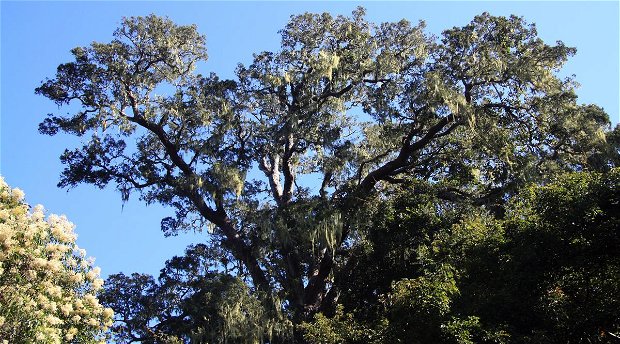
Economically important trees in the Knysna Forests in the 19th and early-20th Centuries
Here's a brief look at some of the economically important trees of the Knysna Forests - with links to authoritative external sites (generally the South African National Biodiversity Institute's PlantsZAfrica) for detailed information about each species.
The scale of the harvest was enormous compared to the modern era: one area of the forests alone (Sourflats) yielded 3,792 cubic metres of Outeniqua yellowwood (Afrocarpus falcatus) between 1885 and 1888 - whereas in 1997, the total yield of the same timber from all of the Southern Cape forests came to just 19 m3.
Outeniqua yellowwood
- Afrocarpus falcatus (Thunb.) C.N.Page (synonym: Podocarpus falcatus (Thunb.) R.Br. ex Mirb.)
- Family: PODOCARPACEAE
- Common name: Outeniqua yellowwood
- Afrikaans: Kalander
- Xhosa: umKhoba
The Outeniqua yellowwoods are the big trees of the Knysna Forests, often towering over the other species in the forest canopy
The timber was used in the past for shipbuilding - particularly (given the length of the boles) for masts - and in construction (for beams and floors). It was also used in wagon-making, and for furniture, etc.
Image: © Zoe Poulsen some rights reserved (CC BY-NC)
Real yellowwood
- Podocarpus latifolius (Thunb.) R.Br. ex Mirb.
- Family: PODOCARPACEAE
- Common name: Real yellowwood
- Afrikaans: Kalander; opregtegeelhout
- Xhosa: umCheya
The timber was, and still is, sought after for beams and floors - many of the old buildings in the Cape had yellowwood floors - and for furniture. It was also used for railway sleepers.
The timber of the real yellowwood was used more often than that of the kalander or Outeniqua yellowwood, which the settlers only discovered later. This may be the reason why P. latifolius is known as 'real,' although an alternate theory suggests that 'real' was a mistranslation of 'opreg,' which means correct. (It was the correct tree to harvest...)
Telling the difference between the two yellowwoos in the forests is easy: look at the bark for your first clue. The kalander’s peels off in ragged blocks, while that of the real yellowwood peels off in narrow vertical strips. The real yellowwood also has longer, broader leaves (latifolius imeans `broad-leaved’).
Image: Consultaplantas [CC BY-SA 4.0], from Wikimedia Commons
Stinkwood
- Ocotea bullata (Burch.) Baill.
- Family: LAURACEAE
- Stinkwood (but the poor Victorians couldn't bring themselves to *pronounce* a word so rude as 'stinkwood' - so they called this species the laurel.)
- Afrikaans: Stinkhout
This hard and heavy, but easily worked wood ranges in colour from golden through brown to almost black. It is one of the most expensive and highly prized timbers in the world, and has become a symbol of old Cape culture and particularly of the Voortrekker tradition.
Stinkwood was in such great demand in the Cape Colony that the Knysna forests became depleted of accessible specimens as early as 1812.
With improved forest management techniques, small quantities of stinkwood are now occasionally harvested - largely for use in fine furniture.
Image: Johan Baard via iNaturalist. CC-BY-NC 4.0 Some rights reserved
Assegai
- Curtisia dentata (Burm.f.) C.A.Sm.
- Family: CORNACEAE
- Common name: Assegai
- Afrikaans: Assegaai
- Xhosa: uSirayi; umGxina
The wood is hard and heavy, dull red to pink, and straight grained. Although it tends to split when seasoned, itwas found to be ideal for making spokes and other parts for wagons. Because of this, large specimens are now rare.
The common name refers to the spear-like shape of the leaves: the wood wasn't used for making assegais.
Image: © Tony Rebelo, some rights reserved (CC-BY-SA)
White pear
- Apodytes dimidiata E.Mey. ex Arn. subsp. dimidiata
- Family: ICACINACEAE
- White Pear
- Afrikaans: Witpeer
- Xhosa: umDakane
The wood is white to yellow, pale brown or pink. It is strong, elastic, hard and heavy, and was at one time highly sought after for wagon-making. Today it is used for fine furniture, turning, tool handles, and rifle butts.
Witels
- Platylophus trifoliatus (L.f.) D.Don
- Family: CUNONIACEAE
- Common names: white-alder, white-els
- Afrikaans: witels, witelsboom, witte-elshout
This large evergreen tree can reach a height of 30 m, and older specimens often have gnarled, grotesque stems. Bark on younger branches is greyish, and becomes brownish with age.
The wood of the white alder is white to yellow, pale brown, or pink. It is strong, elastic, hard and heavy, and was highly sought after for wagon-making, tool handles, and rifle butts in the 19th Century. Today it's used in fine furniture, and for turning.
Image: © Brian du Preez (CC by NC 4.0) some rights reserved
Saffraan
- Elaeodendron croceum (Thunb.) DC.
- Family: CELASTRACEAE
- Common names: saffron; saffron wood, forest saffron
- Afrikaans: saffraan, bossafraan
The name 'forest saffron' comes from the powdery-yellow, saffron-coloured layer of pigment that's found under the bark of this medium-tall tree. This colouration caused some confusion for early botanists and settlers, who sometimes referred to the saffron as a yellowwood - although they aren't related.
Like the yellowwoods, the saffron produces beautiful, yellowish wood that's well suited to making fine furniture.
According to PlantsZA, "Preparations of the root and bark have proved to be fatal to humans, presumably due to the presence of alkaloids of which little is known. The bark was used in dyeing and tanning by Voortrekker settlers."
Image: © qgrobler (CC-by-NC 4.0) some rights reserved
Hard pear
- Olinia ventosa (L.) Cufod.
- Family: OLINIACEAE
- Common name: hard pear
- Afrikaans: hardepeer
- Xhosa: umNgenalahla, iNgobamakhosi, iNqudu, umNonono
This tree produces strong, hard, heavy, yellow-brown wood that takes a fine finish. It was used in the past for fencing posts, telegraph poles, musical instruments, and wagon building, and it's now used mainly in fine furniture.
Ironwood
- Olea capensis L. subsp. capensis
Family: OLEACEAE
Common names: small ironwood , black ironwood, buchuwood,, false ironwood - Afrikaans: kleinysterhout , basterswartysterhout, basterysterhout, bucku, buckuhout, swartysterhout, valsysterhout, witboekenhout
- Xhosa: igqwanxe, umhlebe, umnquma-swile
The timber of the ironwood tree is known as the heaviest wood of all: it sinks, rather than floats in water. For this reason, it wasn't as popular as the other species for harvesting in the 19th Century, although it was occasionally used for ploughs and harrows, and is suitable for sleepers, piles, flooring, and veneers.
According to PlantsZA, the forester and author F Von Breitenbach (Southern Cape Forests and Trees,1974) observed "that the early foresters left a disproportionate number of large black ironwood trees standing, because with only hand-powered tools, it was much more profitable to go after yellowwood and stinkwood - for the effort involved in felling and removing one ironwood, they could process several of the other trees."
Image: © Tony Rebelo (CC BY-SA 4.0) some rights reserved

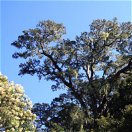
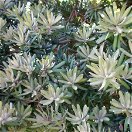
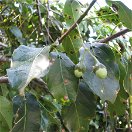
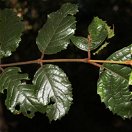
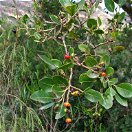
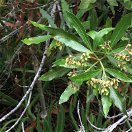

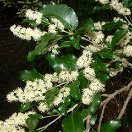
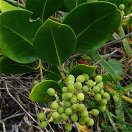

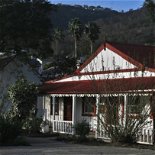


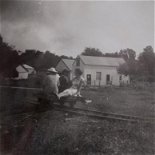


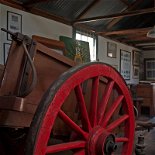
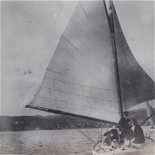


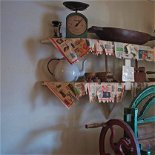
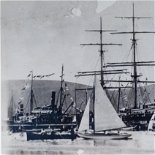

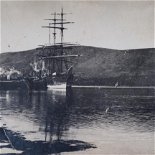


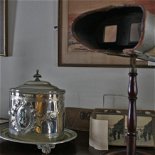
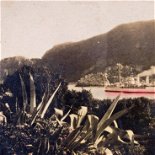
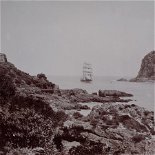
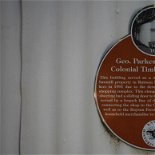
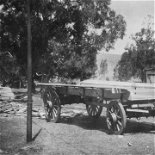
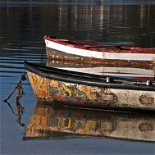

Share This Page